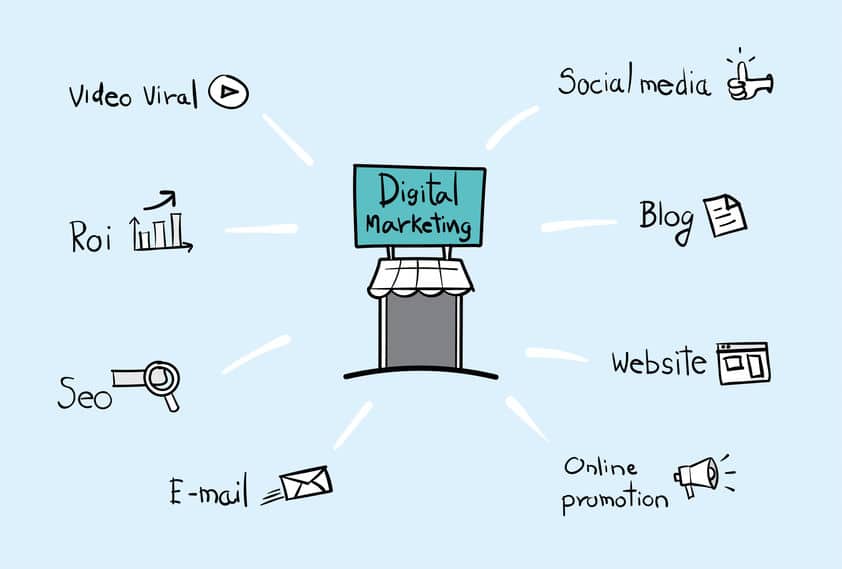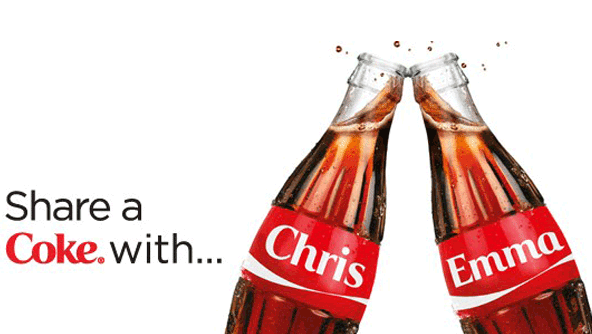Since the fields of content marketing, digital marketing, social media campaigning, and advertisements appeared at the advent of mass online media, the evolution of these marketing mechanisms has been non-stop.
As such, it can be difficult for a person entering this sphere for the first time to catch up on that history – the mistakes made and lessons learned in the past – in order to understand what they need to do now.
Take for example the lead magnet – a strategy which was no doubt revolutionary at one point, but that is now such a common place tactic that a new content marketer might not hear of it for months due to its perceived obviousness.
Think of this article as a content marketing history lesson, comprised of the best bits of age-old knowledge especially relevant to anyone starting out today.
Often going forward means looking backward for the novice content marketer. Evergreen strategies of the past can be more useful to him than new innovation.

PICTURED: For more than a thousand years, star gazers believed the planets and the sun revolved around the Earth until Nicolaus Copernicus deduced that in fact it was the earth that revolved around the sun. No one talks at great length in modern astronomy classes about this fact; it’s so well-ingrained within the zeitgeist.
Let’s go over some need-to-know factors about tried and tested content marketing strategies similar to Copernicus’s cosmos-altering discovery, which a new marketer would do well to know…
Talking ads…
If you’re planning to launch some paid campaigns either through a search engine, or a social media platform, there is a basic template of checkboxes you need to know in order to save yourself the trouble of falling into one of the classic advertising ditches.
Don’t launch any significant advertising campaign until you’ve…
- Made certain your ad copy and images are the right ones. Put a little bit of money into some preliminary A/B or split tests to find out which copy and image perform better. If you’re planning to spend several hundred dollars on ads, make sure you have every advantage visually.
- Just like copy and images, you’ll want to make certain your ads are targeting the precise audience in terms of gender and age. Again, an A/B or split test will help you figure this out.
- If your ad involves a checkout process, make sure you have all the necessary email marketing tools set up. You should have emails for sign up, order confirmation, and most importantly, abandoned checkout. Once you’ve created all that, test them to make sure they work correctly.
- You’re certain that all of your links are appropriately set up for tracking purposes. If a bunch of good traffic comes your way and you have no way of seeing where it came from, half the point of your ad is lost.
A lot of this can take time, and may lead to frustration, but the window of success is so small in most online ad campaigns, that unless you take the extra time to take care of the basics,
1: You’ll be at an even smaller chance of success, or
2: Any success you do have will be hindered by poor follow-up capabilities.
[insert page=’10-must-have-content-marketing-apps-tools’ display=’single-related-article-02.php’]
The kind of content determines where you should look
Where you should look, that is, for conversions. Is your content the kind of thing that could drag someone away from what they were doing and convince them to come and look at your landing page? What kind of content would fit that criteria?
On the traditional social media platforms where one might place an ad like Facebook and Instagram, people generally spend a few uninterested seconds at most looking at things that they aren’t familiar with.
It’s important to remember that most people are on these platforms to interact with their friends and favored organizations, or kill time at the DMV (or something like that) not to look at your ad, so you’ve got to understand what capacity your ad has for pulling them away from what they were doing.
Here’s how you can do this.
- Some of the ways you can improve this likelihood is to target people who have interests in organizations similar to yours, rather than for example, hobbies. This is because most large organizations are very active on social media.
- If you are, for example, advertising some software for SEO, target audience members who spend their time reading articles on websites like Relevance or eData Source, rather than audience members whose interests include content marketing.
- Another example is those who are advertising package tours for adventurous travel. Target people who, for instance, read National Geographic, or watch travel channel, rather than those who simply list traveling or adventure among their interests.
By targeting specific organizations like a sports franchise or National Geographic for instance, you can target people who not only like something as broad as say, basketball or “adventure” but people who actually take action to pursue those things.
You know they’ve taken an action because they took the time to like or follow basketball teams and National Geographic on social media!
[insert page=’step-by-step-guide-to-keyword-research’ display=’single-related-article.php’]
Search engines
On the other hand, advertising on search engines like Bing or Google have the benefit of offering something to people who have directly searched for it.
THIS IS A CRITICAL LESSON FOR MARKETERS
Say you have a chemical-free sunscreen or something rather specific; you’re going to have better success on a search engine because most people don’t buy chemical-free sunscreen.
People who are looking to buy chemical-free sunscreen however, are going to take matters into their own hands and go and do it, they’re not going to come across it on Facebook and make the decision there.
On the other hand…
Fashion is something that most people are always up for purchasing and the picture of a stylish dress or pair of shoes is exactly the kind of thing that will distract people from what they’re doing.
A simple reason for this is that fashion doesn’t have nutrition facts, signup terms, subscription pricing, or system requirements. If a shirt is a beautiful shirt that someone would like to have, that’s all it can take for a link click.
[insert page=’get-a-ringside-view-to-competitive-strategies-with-your-semrush-marketing-toolkit’ display=’single-related-article-02.php’]
Good traffic and bad traffic
The old line about how any publicity is good publicity doesn’t quite fit into the modern marketing ethos. You can dump hundreds of dollars into campaigns which yield a steaming pile of nothing.
Bad traffic is everywhere, and it can confuse an internet marketer into thinking they’ve created a successful campaign, when really they are just entertaining people. How can one tell if they are managing to reach only bad traffic?
With no information, bad traffic normally comes as a result of native ads, uneducated Facebook ads, or other kinds of untraceable and un-interactive viewers.
[bctt tweet=”Always make sure your ad is going onto the correct platforms – those most likely to show on the screens of possible buyers.” username=”relevance”]
Some examples of good traffic are…
Good traffic is people who sign up or give out a lead, returning or trackable customers. Good traffic is a person who comes upon your content purely out of organic interest, hence why it is also known as organic traffic. It’s this sort of person which an internet marketer should try and set up to find.
Something to note – a follower or a like on a social media platform, while maybe seeming like a good kind of lead, can often be a bad kind of lead if the person doesn’t organically interact with your page. The amount of conflicting things fighting over space on the average Facebook user’s wall will generally mean nothing you post will get seen.
While the other kinds of traffic represent people who have to be retrieved by the marketer, the organic traffic visits on its own.
- This is also useful for understanding your place in the internet, because organic traffic is considered very highly by search engines for the sake of Domain Authority scores and ranking.
[insert page=’top-25-digital-marketing-influencers-to-follow-in-2017′ display=’single-related-article.php’]
How can I increase good traffic and decrease bad traffic?
You can target these people who make up your good traffic by really refining your audience on Facebook ads, setting up a website and tracking where people are coming from, or offering a signup feature – either for a newsletter or some free gift – often called a “lead magnet” – which we mentioned earlier.
Another kind of good traffic are those people who, as mentioned above, just walk right into your online presence and start taking actions. To these people one should behave as a 5-star customer service representative. Let them know and feel that you are a real person offering something of real value.
Decreasing bad traffic on the other hand…
One way you can decrease the amount of bad traffic you receive is to stop any ads sending to any platform that isn’t collecting useable reports on the people interacting with it – which can happen for a number of reasons.
- It could be because the website’s compliance regulations prohibit data collecting and tracking.
- It could be because your traffic is coming and going through Google or Amazon, who give very little information about their traffic to you.
- It could be because you don’t have the proper tracking links and programs set up.
- Finally, it could be because the ad is performing badly, and there isn’t any data because there isn’t any response.
Another way to decrease bad traffic is to generally avoid paid media until you have a really clear idea of how to reach your audience, who they are, and where on the World Wide Web they spend their time.
Another way to decrease bad traffic is to send emails to any new lead you get specifically asking them if they wish to receive emails from you.
A “YES” means that they are generally interested in what you have to say/sell.
A “NO” – equally useful to the marketer – means that they were never going to be interested in what you have to say/sell and would therefore skew the reporting on your email campaigns due to their inherent lack of interest.
Maximizing good traffic and minimizing bad traffic is the key to any internet marketing strategy.






